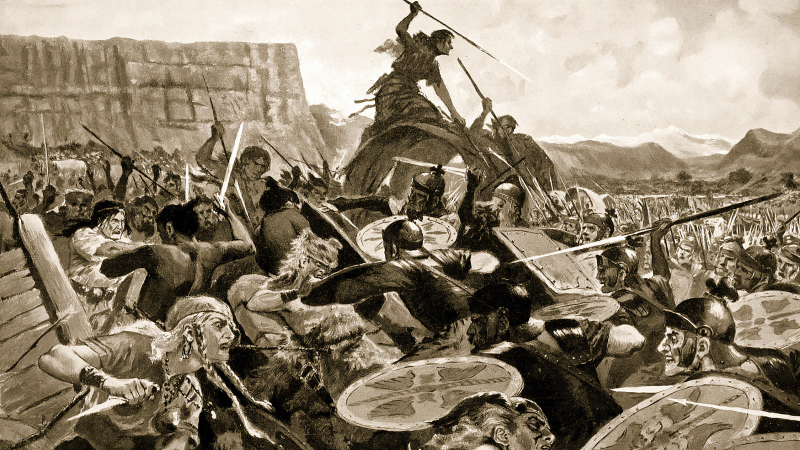Battle of Aquae Sextiae

The allied Germanic tribes were migrating towards the end of the second century BC, and thousands under King Jugurtha had determined Italy would be their new home. The German forces proved to be far more powerful than the newly-emerging Roman Empire had anticipated during what is known as the Battle of Aquae Sextiae. At the Battle of Norcia in 112 BC, they completely routed a Roman army. They then followed this up in 105 BC with an even bigger victory at Arausio, when they annihilated tens of thousands of Roman soldiers. The army of Consul Gauis Marius was tasked with stopping the worst threat to Rome in more than 150 years. Romans led by commander Gaius Marius defeated the Teutones and Ambrones when they attempted to block the Alps' path into Italy.
He initially confronted them in a river valley in Northern Italy by stationing his troops there to disrupt a German supply line that they would use to migrate south. Marius had his army take up a strong position on a hill, build entrenchments, and gather supplies for a siege while the enemy arrayed themselves, despite being outnumbered by 140,000 previously extremely effective Germans to 40,000 soldiers. Marius encouraged the Teutones to strike. The 4,000-strong covert Roman force defeated the Teutones' force when they attacked. They launched a surprise rear attack on the Teutonic force. As a result, the opposing forces lost their way and were routed. Teutones and Ambrones were exterminated by the Romans, who killed 200,000 people including their king Teutobod and captured 90,000. Children and women who were sold as slaves were among the lives that were captured. Those who lived on became the Third Servile War's rebel gladiators. A war against the Cimbri was fought and won by Marius and proconsul Quintus Lutatius Catulus a year later.
Date: 102 BC
Location: Modern Aix-en-Provence, France
Combatants: the Roman Republic against Teutones and Ambrones
Result: Roman victory













